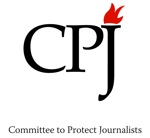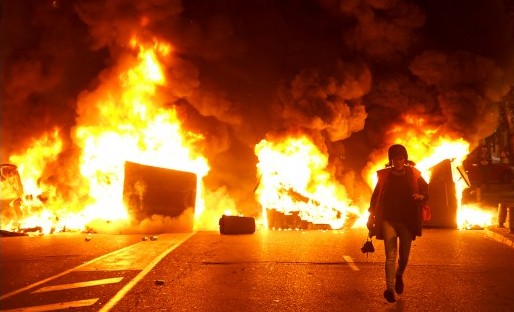The murders of freelancers James Foley and Steven Sotloff last year put the news industry on the spot. What could news executives, press freedom groups and individual journalists do to improve safety? The issue was not new. International news organizations had been grappling with their responsibility towards freelancers and locally hired media workers for years. Several had begun treating freelancers as they would their own staffers when it came to safety. Freelancers too had joined together under the Frontline Freelance Register to demonstrate that they were professionals and should be treated and compensated as such.
The beheadings by Islamic State, however, captured global attention and demanded a concrete response from the media. A group of foreign news editors got together on the sidelines of an American Society of News Editors meeting in Chicago in September, and the seeds of an idea were sown.
That idea came to fruition recently in the form of “A call for global safety principles and practices.”

Lebanese journalists participate in hostile environment training. Photo by Hibr and reused here with Creative Commons license.
We could have used a tabloid headline writer but the title, while not catchy, tells the tale. The principles, launched at the Columbia Graduate School of Journalism, were negotiated by FFR, major news wires, press freedom advocates, including CPJ, and journalist safety groups. So far, 30 organizations have signed on to them.
The principles represent a moral commitment on the part of news organizations to treat freelancers fairly, while freelancers undertake to prepare themselves fully before embarking on dangerous assignments.
The document lays out seven guidelines and commitments for freelancers, and the same number for news organizations. When we started the project, I doubted that some of the differences would be bridged. Corporate lawyers would balk at the liability exposure, or freelancers would insist on commitments to better pay and expenses.
In the end, everyone made accommodations, and what has emerged is unprecedented. Editors sending freelancers to conflict areas will now follow these practices:
- News organizations and editors should endeavor to treat journalists and freelancers they use on a regular basis in a similar manner to the way they treat staffers when it comes to issues of safety training, first aid and other safety equipment, and responsibility in the event of injury or kidnap.
- News organizations should not make an assignment with a freelancer in a conflict zone or dangerous environment unless the news organization is prepared to take the same responsibility for the freelancer’s well-being in the event of kidnap or injury as it would a staffer. News organizations have a moral responsibility to support journalists to whom they give assignments in dangerous areas, as long as the freelancer complies with the rules and instructions of the news organization.
Reporters covering stories in dangerous environments are urged to:
- …complete a recognized news industry first aid course, to carry a suitable first-aid kit and continue their training to stay up-to-date on standards of care and safety both physical and psychological. Before undertaking an assignment in such zones, journalists should seek adequate medical insurance covering them in a conflict zone or area of infectious disease.
In the panel discussions that followed the presentation of the guidelines at Columbia, several journalists and students highlighted what the principles do not cover. There are lots of “shoulds” rather than “wills” in the clauses. The guidelines also do not speak directly to work “on spec,” or speculation — freelancers who are not on assignment for an outlet but who sell material to that outlet.
These are all good points that the compilers of the guidelines are aware of. The principles are not an enforceable contract, but a moral commitment to improving safety for everyone. They represent a first step on a road that will require us to convince many more than the 30 or so news organizations and advocacy groups that have endorsed them to sign on. We have little choice given that in the past three years the killing, kidnapping, and imprisonment of journalists are at record highs, with 61 killed last year and 70 killed in 2013.
Among the audience at Columbia was someone for whom these numbers are not just statistics. Diane Foley, who, along with her husband John, has set up The James W. Foley Legacy Foundation to honor their son’s work by helping journalists and their families, welcomed the principles.
“I am so encouraged by this gathering, she said. “It’s a huge step.”
Robert Mahoney is CPJ’s deputy director. He writes and speaks on press freedom, and has led CPJ missions to global hot spots from Iraq to Sri Lanka. He worked as a reporter, bureau chief and editor for Reuters around the world. Follow him on Twitter @RobertMMahoney.
 A version of this post originally appeared on CPJ’s Security Channel. The Committee to Protect Journalists is a New York-based, independent, non-profit organization that works to safeguard press freedom worldwide. You can learn more at CPJ.org or follow the CPJ on Twitter @pressfreedom or on Facebook here.
A version of this post originally appeared on CPJ’s Security Channel. The Committee to Protect Journalists is a New York-based, independent, non-profit organization that works to safeguard press freedom worldwide. You can learn more at CPJ.org or follow the CPJ on Twitter @pressfreedom or on Facebook here.

